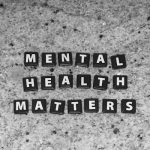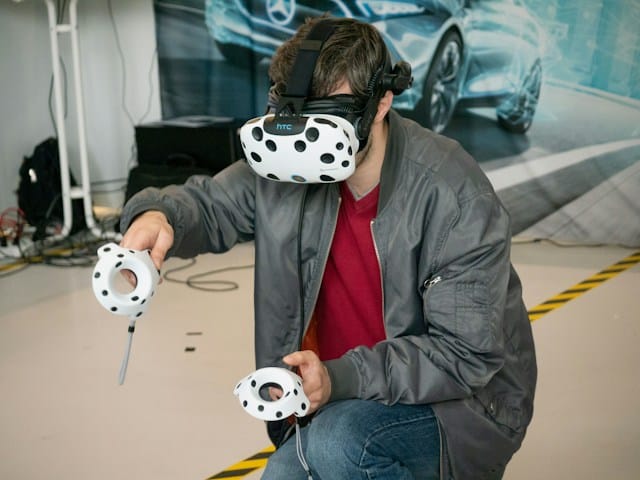The advent of technology has revolutionized various sectors, including the field of disaster management and emergency response. Among the innovative tools being explored, virtual reality (VR) stands out in its potential to transform the training landscape. The question now arises, can virtual reality simulations truly improve disaster preparedness and response training?
In this article, we delve into the various aspects of integrating VR into emergency training programs. We will explore scholarly studies, review real-world applications of the technology, and analyze its efficacy in enhancing learning outcomes.
A lire également : How can inclusive design principles be applied to enhance public transportation accessibility?
We will also discuss the potential of VR simulations in triage scenarios, the role of Google and CrossRef in virtual learning, and the valuable insights from research studies published on PubMed.
The Emergence of Virtual Reality in Training
Virtual reality technology has made significant strides over the past decade, becoming increasingly accessible in various fields. This section will explore the potential of VR in training scenarios, focusing on the benefits it offers over traditional training methods.
Dans le meme genre : What impact does eco-friendly packaging have on the reduction of single-use plastics?
Implementing virtual reality in disaster response training has the potential to drastically improve learning outcomes. A study published on PubMed highlighted that VR-based training could enhance the learning experience by providing a more immersive and realistic training environment. This interactive setting allows trainees to gain first-hand experience in managing disasters, which helps them to internalize lessons and apply them more effectively in real-world scenarios.
Moreover, VR can provide a safe space for trainees to make mistakes and learn from them without real-world consequences. This feature is particularly valuable in disaster response training, where errors can have devastating effects.
The Application of VR in Disaster Preparedness and Response Training
The concept of using VR in disaster preparedness isn’t just theoretical. There are already many real-world instances where VR has been utilized for this purpose. In this section, we’ll explore these applications and discuss how they have contributed to improved disaster response.
One notable application of VR in disaster preparedness is in triage training. Triage, the process of determining the priority of patients’ treatments, is a critical skill in disaster response. By using VR, trainees get hands-on experience making triage decisions in a realistic, high-pressure environment.
In addition to providing realistic training scenarios, VR also allows for the replication of rare or unpredictable disaster situations. Traditional training methods often rely on hypothetical scenarios, which may not fully prepare trainees for the unpredictability of real disasters. However, VR simulations can mimic these unpredictable events, providing trainees with invaluable experience dealing with uncommon or complex situations.
Google and CrossRef in Virtual Learning
Training traditionally occurs in a classroom or field setting, but the rise of virtual learning has provided new opportunities for disaster preparedness training. This section will discuss how digital platforms like Google and CrossRef contribute to virtual learning, enhancing the VR training experience.
Google’s VR platform, Google Expeditions, has been utilized for disaster response training. It offers a variety of VR experiences, including simulations of natural disasters such as earthquakes and hurricanes. Trainees can navigate these environments, providing a more practical and engaging learning experience than traditional classroom-based learning.
CrossRef, a digital hub for scholarly research, is another resource that can support VR training. It offers a vast library of research on VR applications in disaster response training, providing valuable insights that can guide the development of VR training programs.
Enhancing Disaster Response with VR Simulations
While VR simulations have shown promise in improving disaster preparedness training, it’s critical to consider how these improvements translate into real-world benefits. This section will examine how VR-enhanced training can enhance disaster response, using evidence from scholarly research and case studies.
A review of studies published on PubMed indicates that VR training can significantly improve disaster response. These studies show that VR-trained responders often exhibit quicker decision-making, more accurate triage, and better coordination during disaster events.
Additionally, VR training can also help to reduce the mental stress experienced by disaster responders. By exposing trainees to realistic disaster scenarios in a controlled environment, VR training can help to acclimate them to the stress of real disaster situations, improving their mental resilience.
The Future of VR in Disaster Preparedness and Response Training
While the benefits of VR in disaster preparedness training are clear, it’s equally important to consider the future implications of this technology. As VR technology continues to evolve, it will invariably influence the future of disaster preparedness training.
Emerging trends suggest that VR simulations will become more immersive, incorporating other sensory experiences such as touch, smell, and even taste. This level of sensory immersion can further enhance the realism of training scenarios, pushing the boundaries of virtual training.
Moreover, as VR technology becomes more affordable and accessible, there’s potential for widespread adoption of VR in disaster preparedness training programs. This could democratize access to high-quality training, ensuring that more emergency responders are adequately prepared to handle disaster events.
Overall, the integration of virtual reality into disaster preparedness and response training holds immense potential. As we continue to explore and harness this technology, we can look forward to more effective and efficient disaster response efforts in the future.
Exploring the Intersection of VR and Public Health
Public health refers to the science of protecting and improving the health of people and their communities. It involves promoting healthy lifestyles, researching disease and injury prevention, and detecting, preventing, and responding to infectious diseases. The integration of the principles of public health with virtual reality could transform the way we train for disaster response.
Virtual reality training, with its immersive and interactive capabilities, could provide an excellent platform for public health education. For instance, VR can simulate the spread of infectious diseases, allowing trainees to witness the effects of public health measures like quarantine and vaccination. This type of experiential learning can encourage a more in-depth understanding of public health principles, enhancing the effectiveness of disaster preparedness training.
Quasi-experimental studies published on Google Scholar have demonstrated the potential benefits of integrating VR into public health education. In these studies, the control group underwent traditional lecture-based training, while the experimental group received VR-enhanced training. The results showed that the experimental group achieved significantly better learning outcomes, indicating the potential of VR in public health education.
Furthermore, the use of VR in public health can extend beyond education and training. For instance, VR can also be utilized for planning and executing public health interventions during disaster scenarios. By simulating the disaster scenario, public health officials can better anticipate and address potential challenges, leading to a more effective and efficient disaster response.
The Impact and Relevance of VR in Disaster Medicine
Disaster medicine involves medical responses to mass casualty incidents, including the triage, treatment, and transportation of the injured. Given the complexity and high stakes of disaster medicine, training programs need to be comprehensive and realistic.
Virtual reality simulations can replicate real-life scenarios, providing an immersive and realistic environment for trainees to practice their skills. This realistic training environment can help to bridge the gap between theoretical knowledge and practical skills, enhancing the efficacy of disaster medicine training.
Moreover, virtual reality training can provide trainees with exposure to rare or complex disaster scenarios that they may not encounter during traditional training. This can ensure that they are prepared to handle a wide range of scenarios, enhancing their versatility and readiness.
An integrated review of studies on PubMed and Google Scholar shows that VR-based training can improve the performance of medical responders in disaster scenarios. These studies showed that VR-trained medical responders often exhibited quicker decision-making, more accurate triage, and better coordination during mass casualty incidents.
Conclusion
In conclusion, integrating virtual reality into disaster preparedness and response training could revolutionize the field. By providing a more immersive, engaging, and realistic training environment, VR can enhance learning outcomes, improve disaster response, and reduce the mental stress experienced by disaster responders.
While there are still challenges to overcome, the future of VR in disaster preparedness training looks promising. Emerging trends suggest that VR simulations will become more immersive and accessible, transforming the way we train for disasters.
Furthermore, the potential applications of VR extend beyond training, with opportunities to use the technology for planning and executing public health interventions during disaster scenarios. By harnessing the full potential of VR, we can strive towards a future where disaster response is more effective and efficient.
In the realm of disaster preparedness and response training, VR has moved from being an intriguing possibility to a tangible tool with significant benefits. As we continue to harness this technology’s potential, we can look forward to a future of more effective and efficient disaster response strategies.






